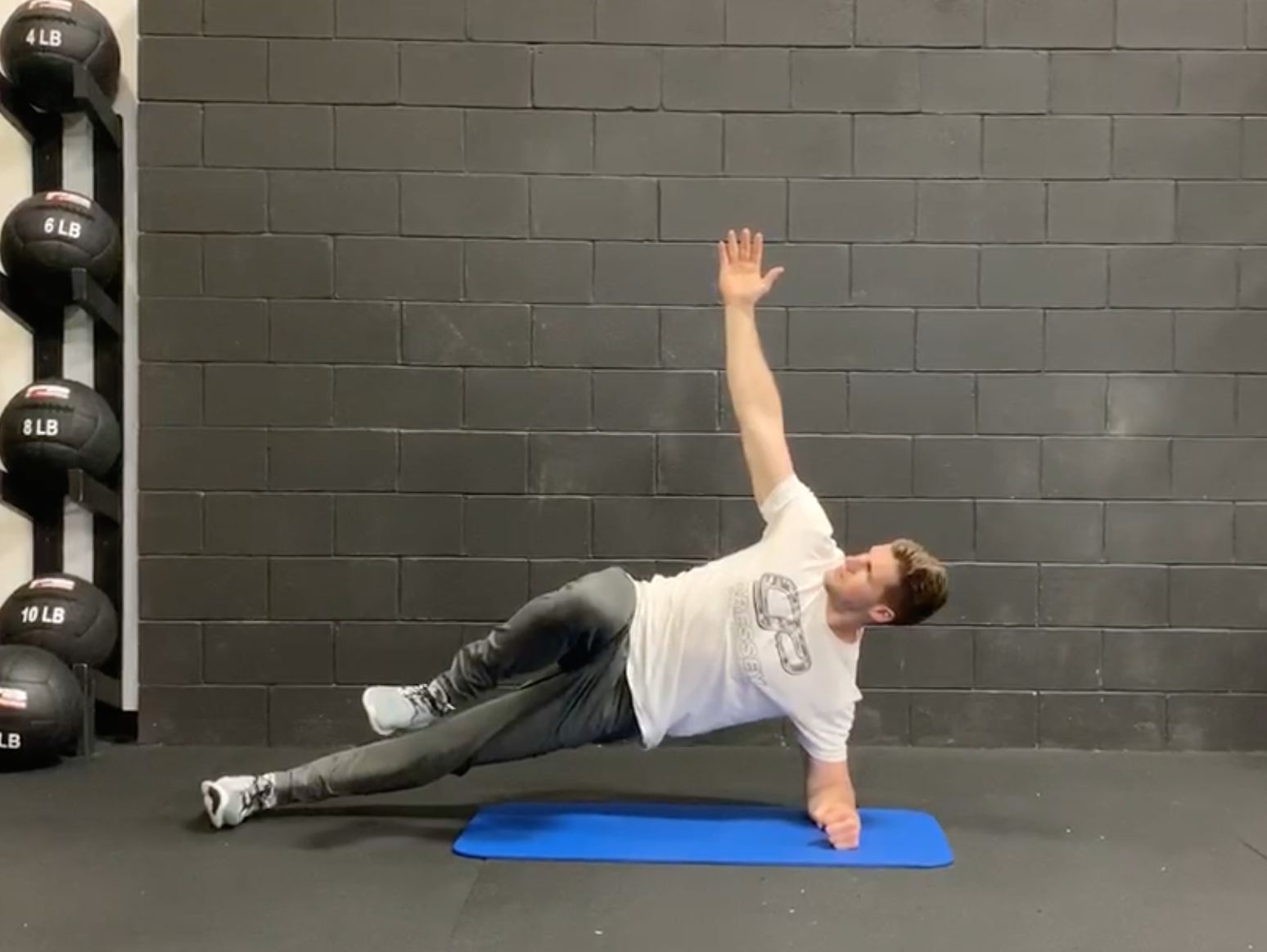
Exercise of the Week: Side Bridge with Top Leg March
This go-round of the Exercise of the Week comes from Cressey Sports Performance – Massachusetts coach, Cole Russo. Before we get to it, though, just a quick heads-up that I’m running a weekend flash sale on my Understanding and Coaching the Anterior Core presentation. You can get 30% off with the coupon code CORE30 at checkout; just head HERE to get more information and purchase.
Key Coaching Points
1. This could simply be a progression from the traditional side bridge, in that there is less stability and more stress on the lateral core.
2. In terms of pitching, sometimes lateral flexion of the trunk will be a compensation for abduction of the pelvis to create force and generate momentum from the stretch. Similarly, a traditional side bridge can accomplish the same thing. This is more specific to the joint actions of pitching because the lead leg moves to hip flexion (just like the top leg in the exercise). CSP pitching coordinator shared an awesome post on this a while back:
3. During the gait cycle, it is common to see what is referred to as the Trendelenburg Gait. This happens when the hip abductors are weak and the pelvis falls downward relative to the femur; usually accompanied with another compensation of lateral trunk tilt. The exercise emphasizes hip abduction, anti-lateral flexion, and hip flexion against gravitational forces that relate to the same weaknesses associated with the Trendelenburg Gait.
4. The positions of this exercise resemble the “figure-4” position that is assumed during the sprint cycle. When sprinting, it is necessary for the trunk to transfer force and stabilize the body against multiplanar forces so that the center of mass can directed linearly. Training the trunk to resist lateral flexion can help with this. Training the trunk to resist lateral flexion in biomechanically relevant joint positions can make you Usain Bolt. Core exercises eventually need to be progressed to something more dynamic. Once motor control and appropriate stability are demonstrated, progression to a quicker leg action action will make it more of a reactive stimulus for the nervous system.
5. Never underestimate the value of variety! Subtle additions like this to exercises that have already been rehearsed are a novel stimulus for the brain and can really enrich the motor learning process. The right amount of struggle is a good thing. Consistent patterns with minimal struggles and errors means there is a need for a new stimulus.
6. We’ll usually program this as a 10-15 second isometric hold in the first few weeks of doing this exercise, and then progress to marching in subsequent weeks. It’ll be sets of 8 per side in those who are more highly trained. This can be done as a warm-up, or used for multiple sets later in the training session.
About the Author
Cole Russo is a strength and conditioning coach at CSP-MA. You can follow him on Instagram at @SwoleThomas.


